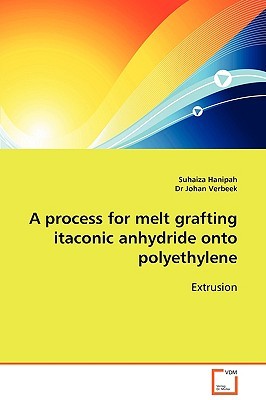
- We will send in 10–14 business days.
- Author: Suhaiza Hanipah
- Publisher: VDM Verlag
- ISBN-10: 3639105745
- ISBN-13: 9783639105742
- Format: 15.2 x 22.9 x 0.5 cm, softcover
- Language: English
- SAVE -10% with code: EXTRA
A process for melt grafting itaconic anhydride onto polyethylene (e-book) (used book) | bookbook.eu
Reviews
Description
Currently, extensive research in using bio-derived polymers is being done, highlighting the importance of sustainable, green polymeric materials. Some sustainable alternatives to synthetic polymers include lignin, starch, cellulose or blends of these with petroleum-based poly-mers. In this study, free radical grafting of itaconic anhydride (IA) onto polyethylene was investigated. IA was selected because it is capable of reacting with polyethylene and amino acid residues, such as lysine. The objective of the research was to identify and investigate the effect of reaction parameters on grafting. These were: residence time, tem-perature, initial monomer concentration as well as peroxide con-centration and type. Grafting was characterized in terms of the degree of grafting (DOG), percentage reacted and the extent of side reactions.
EXTRA 10 % discount with code: EXTRA
The promotion ends in 18d.12:27:39
The discount code is valid when purchasing from 10 €. Discounts do not stack.
- Author: Suhaiza Hanipah
- Publisher: VDM Verlag
- ISBN-10: 3639105745
- ISBN-13: 9783639105742
- Format: 15.2 x 22.9 x 0.5 cm, softcover
- Language: English English
Currently, extensive research in using bio-derived polymers is being done, highlighting the importance of sustainable, green polymeric materials. Some sustainable alternatives to synthetic polymers include lignin, starch, cellulose or blends of these with petroleum-based poly-mers. In this study, free radical grafting of itaconic anhydride (IA) onto polyethylene was investigated. IA was selected because it is capable of reacting with polyethylene and amino acid residues, such as lysine. The objective of the research was to identify and investigate the effect of reaction parameters on grafting. These were: residence time, tem-perature, initial monomer concentration as well as peroxide con-centration and type. Grafting was characterized in terms of the degree of grafting (DOG), percentage reacted and the extent of side reactions.


Reviews